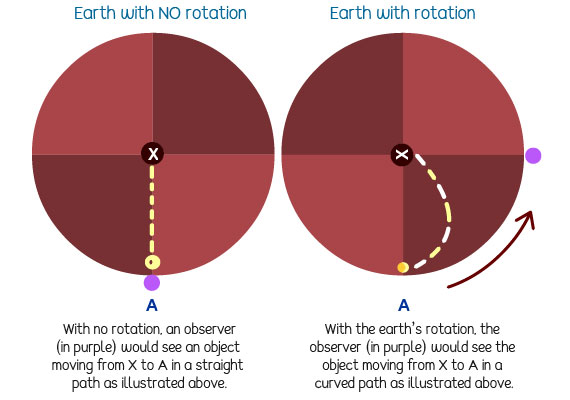- Winds
The Coriolis effect
To understand the Coriolis effect, let us first see what is going on around the earth with winds. The effect of the sun is stronger at the equator than at the north and south poles. Regions along the equator, therefore, have the highest temperatures all year round.
Warm, less heavy equatorial air over large areas rises high up into the atmosphere. We call this a low-pressure system. What happens? The vacuum is filled with cold, dense air, flooding in from the poles. We call this a high-pressure system.
But there is something more to this. Remember that the earth is constantly rotating, so as the winds blow from the north and south towards the equator their flow paths are deflected by the earth’s rotation. When moving objects are viewed in a reference frame, their paths look curved. This is the Coriolis effect and it is caused by the earth’s rotation. This effect makes wind systems on the southern side of the equator (southern hemisphere) spin clockwise and wind systems on the northern side (north hemisphere) spin counter-clockwise.
Here is an illustration of the effect:

Because of this effect, winds in low-pressure zones are forced into a circular motion, just as the kind that begins to form with tropical storms
